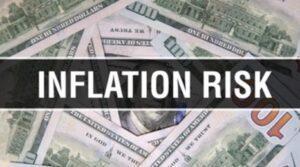Author: Gerald O'Dwyer
Unraveling the $300 Trillion Debt Web Exploring Risks and Implications for the USA’s Economic Landscape
Written by: Gerald O’Dwyer The PE Guru

USA – has close to $300 Trillion debt – personal, corporate, and government debt – MARGIN CALL – Coming? What does this mean? $300 trillion is a significant figure. This level of debt does raise questions about the potential for a “margin call” scenario, where lenders demand repayment or additional collateral when the value of securities purchased on margin declines. While a direct margin call on the U.S. debt is not applicable in the same way it would be for individual investments, the concept metaphorically suggests a point where debt sustainability becomes a critical issue. Here are the potential risks and considerations associated with such high levels of debt:
Interest Rate Risk: If interest rates rise, the cost of servicing debt (especially government debt) increases. This can lead to higher taxes or reduced government spending in other areas.
Inflation Risk: High levels of debt could lead to inflationary pressures, especially if financed by money creation. Inflation erodes the real value of money and can lead to higher living costs.
Currency Devaluation: Excessive debt levels can lead to a loss of confidence in the U.S. dollar, potentially causing devaluation. This impacts international trade and the value of dollar-denominated assets.
Economic Growth Impact: High levels of corporate and government debt can crowd out private investment, hindering economic growth. This can result in lower job creation and wage stagnation.
Financial Stability Risk: High levels of debt, particularly if not sustainably managed, can lead to financial instability. This can trigger economic crises similar to the 2008 financial crisis.
Sovereign Debt Crisis: Although unlikely given the U.S. dollar’s status as the world’s reserve currency, unsustainable government debt levels could lead to a sovereign debt crisis, impacting global markets.
Social and Political Impact: Large debts can lead to austerity measures, impacting social services and potentially leading to political unrest or changes in governance.

Investor Confidence: If investors start losing confidence in the ability of debtors to repay, it could lead to a sell-off in bonds and other securities, increasing borrowing costs.
Global Economic Impact: As the U.S. economy is integral to the global financial system, significant issues with U.S. debt levels could have worldwide economic repercussions.
Credit Rating Impact: If credit rating agencies downgrade the U.S. government’s credit rating, it could increase borrowing costs and affect global financial markets.
Domino Effects in Financial Markets: High levels of corporate debt, in particular, can lead to defaults that impact banks and other financial institutions, potentially triggering a broader financial crisis.
Dependency on Foreign Creditors: A significant portion of U.S. debt is held by foreign entities. Changes in their willingness to hold this debt could impact U.S. interest rates and financial policies.
These risks need to be managed through responsible fiscal and monetary policies. It’s important to note that while these risks are potential concerns, the actual impact is contingent on various factors, including policy responses, economic conditions, and global financial dynamics.


